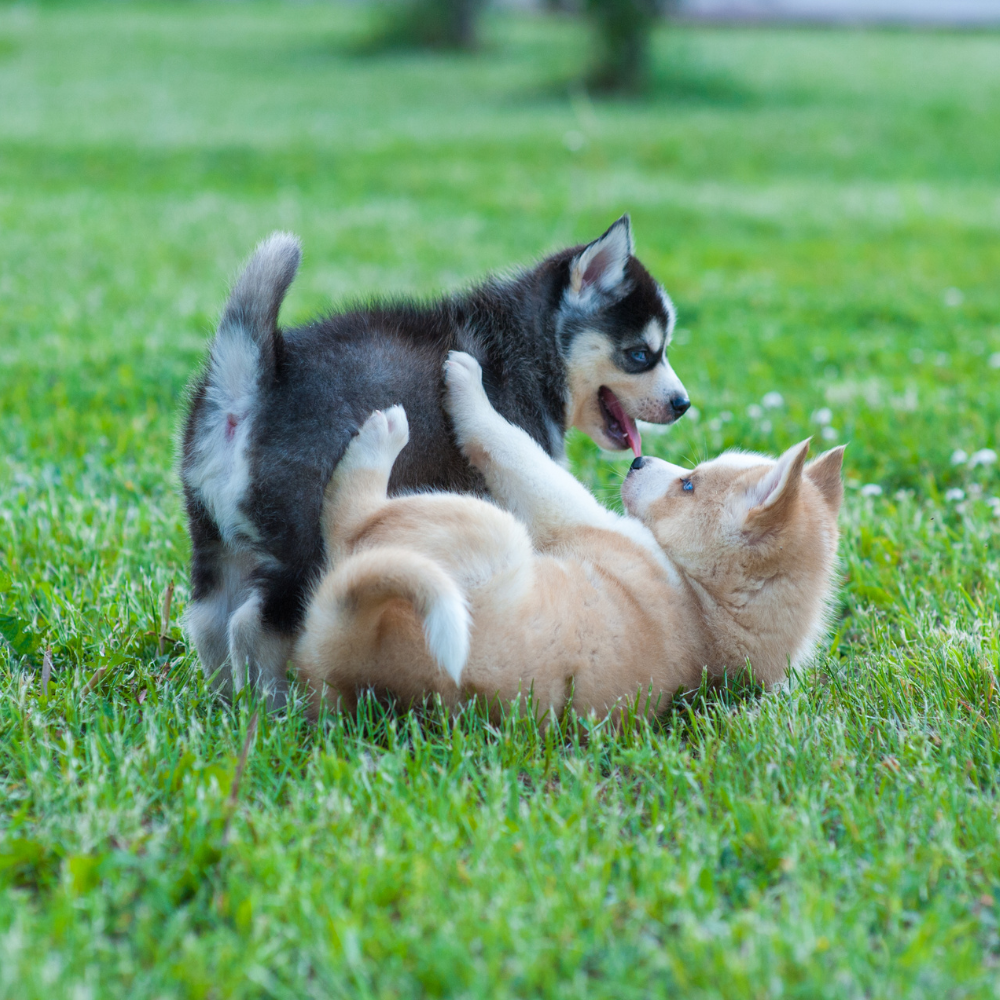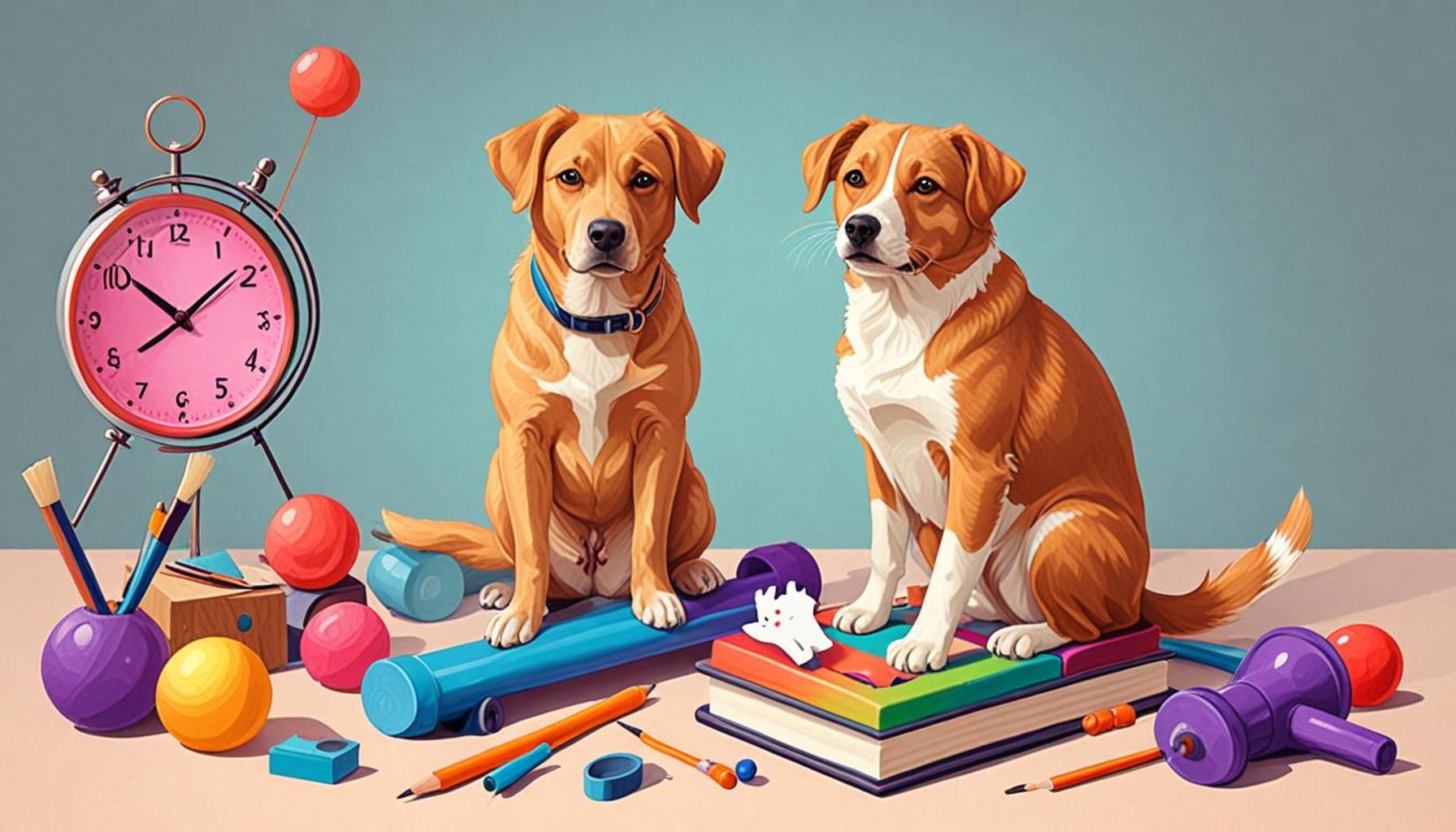Training Techniques for Puppies: Essential Skills for a Well-Behaved Dog

Understanding Puppy Training
Training a puppy is an essential part of dog ownership that goes beyond merely instilling commands. It sets the groundwork for a well-behaved dog and fosters a peaceful coexistence with your family and community. Adequate training establishes habits that influence your puppy’s behavior throughout their life. For instance, a well-trained dog is less likely to bark excessively, chew on furniture, or bolt out the door, which can result in safety hazards for both your pet and those around you.
Employing the right training techniques is important to achieve positive outcomes. Below, we expand on some vital skills you can teach your puppy:
Basic Commands
- Sit: The foundation of many training routines, teaching “sit” allows you to assert control during exciting situations. This command can be essential when welcoming guests, ensuring your puppy stays calm.
- Stay: This command is crucial for keeping your puppy safe. Practicing “stay” can prevent them from darting into traffic or approaching a potentially dangerous situation.
- Come: Teaching your puppy to come when called can significantly impact safety, especially in off-leash environments. Regular practice can turn this command into a reliable tool for recall.
- Down: Teaching your puppy to lie down can help curb hyperactive behavior and encourage relaxation. It’s a building block for impulse control.
Socialization
Socialization is a vital aspect of puppy training. Exposing your puppy to a variety of environments, people, and other pets assists them in developing confidence and reduces fear-based reactions later in life. For example, arranging playdates with other vaccinated dogs allows your puppy to experience different play styles and dog behaviors. Visiting pet-friendly stores helps them acclimate to new sounds and bustling crowds, which is particularly beneficial in urban settings.
House Training
House training is another fundamental skill that requires patience and consistency. Teaching your puppy where and when it is appropriate to relieve themselves is essential not only for maintaining a clean home but also for the dog’s self-discipline. Establishing a regular feeding schedule and taking your puppy out after meals or during playtime can reinforce the desired behavior. Accidents can happen, but remaining calm and reinforcing positive behavior when they eliminate outdoors will create lasting habits.
These foundational skills can significantly improve your puppy’s behavior and ensure a smoother integration into everyday life. With America’s varied environments, such as parks, busy streets, and community events, equipping your dog with these skills is paramount for their safety and the comfort of your fellow citizens.

As you embark on this rewarding training journey, remember that patience and consistency are your greatest allies. Each technique you employ not only enriches your pet’s life but also enhances the companionship you share. As your puppy learns and grows, you’re investing in a relationship filled with joy and fulfillment that can last for many years to come.
DIVE DEEPER: Click here for essential tips on pet nutrition
Essential Training Techniques
When embarking on the journey of puppy training, it is critical to prioritize techniques that not only resolve immediate behavioral issues but also foster a trusting and positive relationship between you and your furry friend. Puppies, being naturally curious and energetic, thrive on learning and exploring their surroundings. Thus, utilizing effective training techniques can help channel their energy into desirable behaviors.
Positive Reinforcement
One of the cornerstones of successful puppy training is positive reinforcement. This method entails rewarding your puppy for good behavior, which strengthens the bond between you and your pet while promoting a learning environment. Rewards can come in various forms, including treats, verbal praise, or playtime. For instance, when your puppy successfully sits on command, offering a small treat not only acknowledges the behavior but encourages them to repeat it. This technique is shown to be both effective and humane, fostering a sense of trust between the trainer and the puppy.
Consistency is Key
Consistency is another crucial element in puppy training. Using the same commands and cues for behaviors helps your puppy understand what is expected of them. Conflicting cues, such as saying “down” while showing them to sit, can confuse your puppy and hinder their learning process. It’s advisable to involve all family members in the training process, ensuring everyone is on the same page regarding commands and expectations.
Setting a Schedule
Establishing a training schedule can also greatly benefit your puppy’s learning capacity. Puppies thrive on routine, and structured training sessions of 5 to 10 minutes, several times a day, can yield remarkable results. Short, frequent sessions are better than lengthy, infrequent ones that may lead to frustration and disinterest. Consider scheduling training sessions during times when your puppy is naturally alert and less distracted, such as after playtime or before meal times.
Life Skills Training
Alongside basic commands and socialization, introducing your puppy to life skills can prepare them for everyday situations. Real-world experiences, such as car rides and visits to the veterinary office, can be part of their training. Gradually exposing your puppy to these experiences can help prevent anxiety and make them more adaptable. To create a comprehensive training approach, consider these important life skills:
- Leash Training: Teaching your puppy to walk politely on a leash with minimal pulling can transform daily walks into enjoyable experiences for both of you.
- Meeting Strangers: Help your puppy become accustomed to people, which will cultivate good behavior during social encounters and reduce fear of unfamiliar situations.
- Basic Grooming: Familiarizing your puppy with brushing, nail trimming, and bathing will make vet visits and grooming sessions much easier in the long run.
By incorporating these essential training techniques into your puppy’s routine, you are laying the groundwork for a well-behaved dog, capable of thriving in various environments. Remember, every interaction is a learning opportunity, and your persistent efforts will lead to a fulfilling companionship with your beloved pet.
| Training Method | Benefits |
|---|---|
| Positive Reinforcement | Encourages good behavior by rewarding actions like sitting or staying, leading to a more trusting relationship between pet and owner. |
| Clicker Training | Clarifies commands through a distinct sound, making it easier for puppies to associate rewards with their actions, thus boosting learning efficiency. |
| Socialization | Reduces anxiety around other dogs and people, promoting a well-adjusted temperament that facilitates positive interactions. |
| Obedience Training | Instills discipline while teaching essential commands, which are vital for safety and managing behavior in various situations. |
Training your puppy can be an enriching experience for both owner and pet. By utilizing methods like positive reinforcement and clicker training, a puppy can quickly learn and retain core commands that form the bedrock of a well-behaved dog. These techniques not only enhance learning but also create a bond of trust, making future training sessions more productive. Additionally, socializing your puppy is crucial as it reduces anxiety and fosters friendliness towards strangers and other animals, helping your pup develop into a well-adjusted adult dog. Ultimately, incorporating obedience training lays the foundation for a positive and safe environment, ensuring your furry friend grows into a respectful and loving companion. Understanding these techniques will spark interest in advanced methods and the significant role they play in your dog’s overall behavior development.
DIVE DEEPER: Click here to learn more
Advanced Training Techniques
While the foundational skills are crucial, progressing to more advanced training techniques can further enhance your puppy’s behavior and imbue them with a sense of discipline. Once your puppy has mastered basic commands, introducing them to advanced training can lead to a more engaging and fulfilling experience for both of you. Here are several key techniques to consider:
Clicker Training
Clicker training is an advanced positive reinforcement method that uses a handheld device, known as a clicker, to mark desired behaviors. The sound of the click provides immediate feedback to your puppy, signaling that they have performed the desired action correctly. By pairing the sound with treats, your puppy quickly associates the click with positive reinforcement. This technique is particularly effective in teaching complex behaviors and tricks, as it allows for precise timing in communication. For example, if you’re teaching your puppy to roll over, clicking at the exact moment they complete the action will reinforce this behavior more adequately than verbal praise alone.
Socialization with Other Dogs
The importance of socialization cannot be overstated in the realm of puppy training. Exposing your puppy to other dogs in a controlled and safe environment can significantly improve their social skills and confidence. Dog parks, training classes, and scheduled playdates are excellent ways to facilitate this interaction. Not only does this help them to learn proper canine etiquette, but it also reduces instances of aggression or fearfulness when encountering other dogs. Engaging with a variety of breeds and sizes can provide your puppy with invaluable experiences, ensuring they grow into well-adjusted adults.
Obedience Classes
Consider enrolling your puppy in obedience classes. Professional trainers can provide structured lessons and expert guidance catered to puppies’ learning styles. These classes often focus on a range of skills, from basic commands to more complex behaviors, and can support your goals of socialization. Moreover, group settings expose your puppy to distractions, such as noises and other animals, reinforcing their training amidst real-world scenarios. Participating in structured training environments can also help foster relationships with other dog owners, offering a community of support and shared experiences.
Problem Solving Techniques
Puppy training often uncovers behavioral issues that require targeted solutions. Incorporating problem-solving techniques into training can nurture your puppy’s cognitive skills while addressing behavioral concerns. For example, if your puppy tends to be overly excitable or jumps on guests, redirecting their energy through alternative activities—like playing fetch or giving a treat-dispensing toy—can give them a proper outlet for their enthusiasm. Training techniques focusing on impulse control, such as the “leave it” command, can also be significant in teaching your puppy to make better decisions and remain calm during situations that normally trigger hyperactivity.
Channeling Natural Instincts
Lastly, understanding and channeling your puppy’s natural instincts can significantly enrich their training. Every breed has unique traits influenced by their lineage. For instance, herding breeds may respond well to activities that encourage control and guidance during play, while retrievers may thrive in retrieval games. Engaging in activities that utilize these instincts not only provides mental stimulation but also helps establish a sense of purpose for your puppy. Activities like agility training or scent work can be entertaining and rewarding for both you and your puppy, ensuring they remain engaged throughout their developmental stages.
As your puppy develops, remember that patience and a flexible approach are vital. By employing advanced training techniques, you can cultivate a well-mannered companion that adheres to social boundaries while enjoying life’s many adventures.
DISCOVER MORE: Click here to learn about the vital role of animal adoption organizations
Conclusion
In conclusion, the journey of training your puppy is essential for forging a well-behaved canine companion who can adapt to various social situations and enrich your life. By integrating a combination of positive reinforcement techniques, such as clicker training, with structured socialization opportunities, you set the stage for a harmonious relationship built on mutual respect and understanding. Furthermore, engaging your puppy in obedience classes not only boosts their skillset but also fosters a community of fellow dog owners who share valuable experiences and insights.
Addressing potential behavioral issues with tailored problem-solving techniques is crucial in developing a puppy’s resilience and confidence. It allows them to learn appropriate ways to cope with excitement or anxiety, ultimately shaping their temperament into that of a well-adjusted adult dog. Additionally, by recognizing and channeling your puppy’s natural instincts, you can provide them with fulfilling activities that promote mental stimulation and physical health.
Consistency, patience, and adaptation to your puppy’s learning style are paramount in the training process. As you embark on this training journey, remember that the investment you make now will pay dividends in the form of a happy, well-mannered dog that enhances your daily life. Delve deeper into various training resources, seek professional guidance if needed, and embrace the experience—after all, a well-trained puppy today promises a fantastic companion tomorrow.


